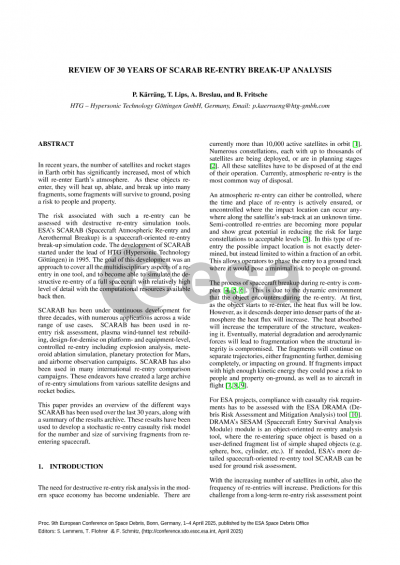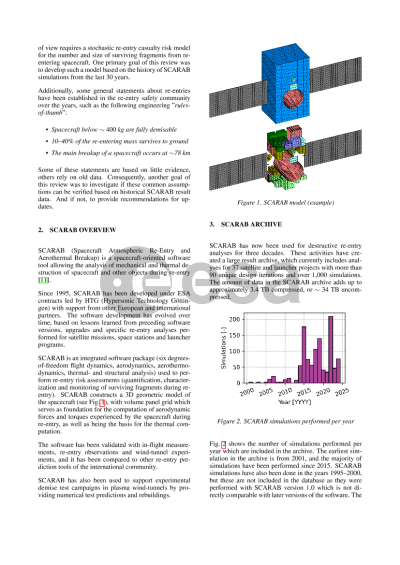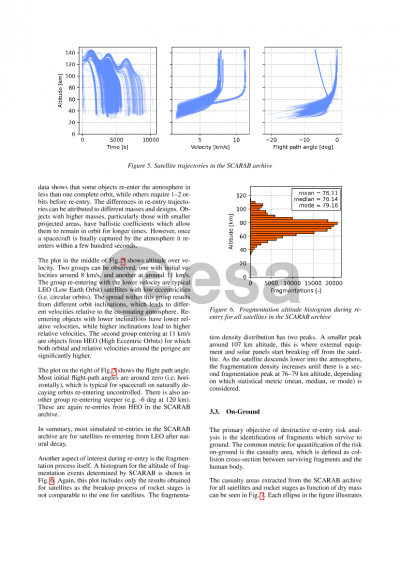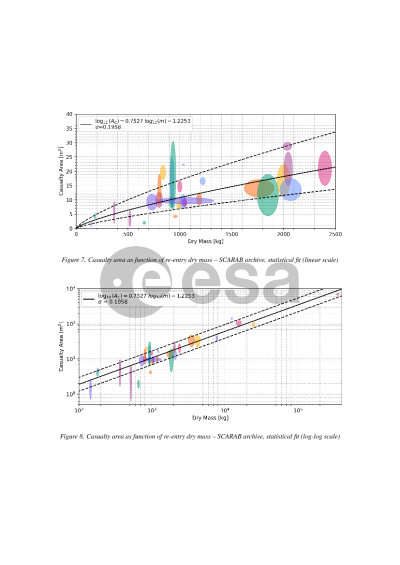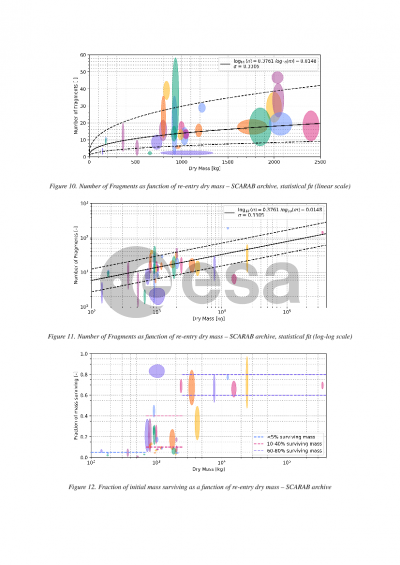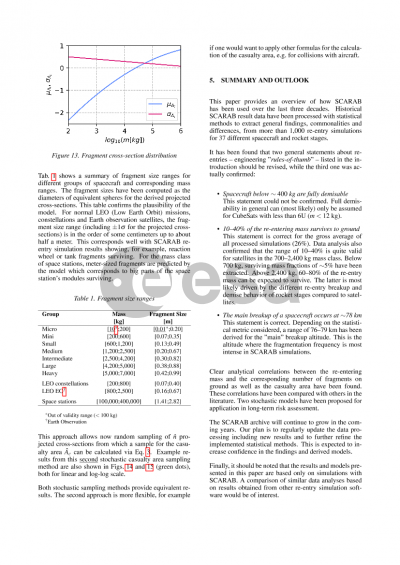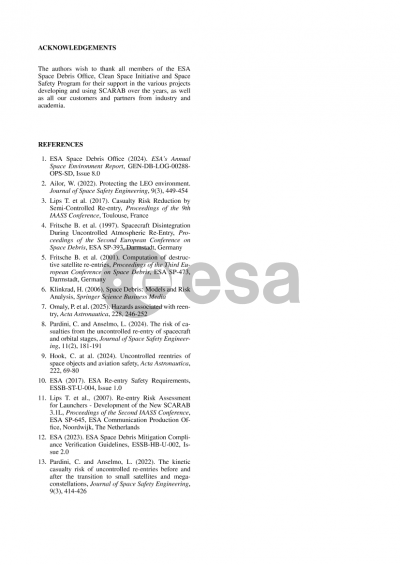Document details

Abstract
In recent years, we have seen a large increase of spacecraft and rocket stages in Earth orbit, most of which will re-enter Earth’s atmosphere. As these objects re-enter, they will heat up, ablate and break up into many fragments, some fragments will survive to ground, posing a risk to people and property.
ESA’s SCARAB (Spacecraft Atmospheric Re-entry and Aerothermal Break-up) is a spacecraft-oriented re-entry break-up simulation code. The development of SCARAB started at HTG (Hypersonic Technology Göttingen) and the first analysis was done in 1995. The goal was an approach to cover all the multidisciplinary aspects of a re-entry in one tool, and be able to simulate a full spacecraft with relatively high level of detail with the computational resources available back then. There was also very little data on the demise behavior of objects, most test campaigns and aerothermal models were designed for surviving re-entry heating.
SCARAB has been under continuous development for three decades, with numerous applications across a wide range of use cases. SCARAB has been used in re-entry risk assessment, plasma wind-tunnel test rebuilding, design-for-demise on platform- and equipment-level, controlled re-entry incl. explosion analysis, meteoroid ablation simulation, planetary protection, and airborne observation campaigns. SCARAB has also been used in many international re-entry comparison campaigns. These endeavors have created a large archive of re-entry simulations from various spacecraft designs and rocket bodies.
In this paper, we want to provide an overview of the different ways SCARAB has been used over the last 30 years, we take a deep dive into the archive and extract statistical insights, and we discuss advancements that may be on the horizon.
Preview
